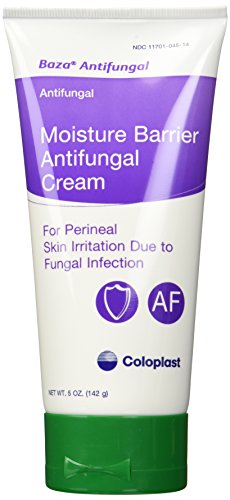Fungal infections in children can pose a significant health concern, requiring effective treatment methods that are both safe and efficacious. Antifungal creams have emerged as a common recourse for managing these infections. However, the selection of appropriate antifungal agents must be approached with due diligence, especially in the context of pediatric care. This article delves into responsible use, indications, and the various types of antifungal creams considered safe for children, while evaluating their mechanisms, formulations, and the scientific basis for their use.
Children are frequently susceptible to fungal infections due to their sensitive skin and developing immune systems. Conditions such as diaper rash, oral thrush, and tinea infections are amongst the prevalent challenges faced by pediatric populations. Antifungal creams serve as a frontline therapeutic intervention for localized fungal infections, promoting healing while minimizing systemic absorption and potential side effects.
In the medical community, the safety profile of these topical agents is of paramount importance. Evaluating the suitability of antifungal creams involves an understanding of the active ingredients, the correct application methods, and potential allergic reactions. An informed approach, rooted in evidence-based practices, ensures that children receive optimal and safe care.
Common Types of Antifungal Creams
A multitude of antifungal preparations are available, each with distinct pharmacological properties. The most commonly utilized antifungal agents in pediatric settings encapsulate azoles, allylamines, and polyenes, each exhibiting unique mechanisms of action against fungal pathogens.
Azole-Based Antifungals
Azoles, including clotrimazole and miconazole, obstruct the synthesis of ergosterol, a critical component of fungal cell membranes. This disrupts cellular integrity and catalyzes fungal cell death. Azole derivatives have demonstrated a favorable safety profile and are extensively employed for the treatment of dermatophyte infections and candidiasis. For instance, clotrimazole 1% cream is indicated for conditions like athlete’s foot and yeast infections, and is generally regarded as safe for children as young as two years.
Allylamine Agents
Another prevalent class of antifungal creams comprises allylamines, such as terbinafine. This compound, through a different mechanistic pathway, inhibits squalene epoxidase, an enzyme essential for ergosterol biosynthesis. Terbinafine is especially effective against tinea infections like ringworm and has been shown to be well-tolerated in pediatric patients. The cream formulation allows for localized therapy, minimizing systemic exposure.
Polyene Antifungals
Polyene antifungals, notably nystatin, function by binding to ergosterol in the fungal cell membrane, leading to cell lysis. Nystatin is most often prescribed for oral thrush in infants, presenting a low risk of adverse effects. It is critical for caregivers to understand that the efficacy of topical nystatin is contingent upon adherence to prescribed treatment regimens, as complete course adherence enhances therapeutic outcomes.
Age and Specific Considerations in Antifungal Treatment
When selecting antifungal creams, factors such as age, weight, and underlying health conditions of the patient must be meticulously considered. The pharmacokinetics of antifungal agents can differ substantially between neonates, infants, and older children, underscoring the necessity of tailored treatment regimens. For instance, while most topical antifungals have been evaluated for safety in older infants and children, their use in neonates may merit careful evaluation due to potential dermal absorption and risk of systemic toxicity.
Implementation of Antifungal Creams: Methodology and Best Practices
The application of antifungal creams necessitates a strategic approach to maximize efficacy while mitigating risks. Before initiating treatment, a thorough examination by a healthcare professional is critical to confirm the diagnosis and dismiss alternative conditions that may mimic fungal infections. Once a diagnosis is established, the following best practices should be observed:
Cleaning and Drying the Affected Area
Effective treatment begins with proper hygiene. The affected region should be washed gently with mild soap and water, followed by thorough drying. Fungi thrive in moist environments, so ensuring the skin is dry is fundamental for enhancing therapeutic effects.
Correct Application Technique
When applying the antifungal cream, it is essential to utilize a clean finger or applicator to prevent contamination. A thin layer should be applied directly onto the affected area and rubbed gently, ensuring comprehensive coverage without excessive amounts that could lead to increased systemic absorption.
Monitor and Follow Up
Regular monitoring is vital to assess the efficacy of the treatment. If symptoms persist or worsen after the recommended treatment duration, a follow-up appointment with a healthcare provider is warranted to explore further diagnostic and therapeutic options. Persistent lesions may require more aggressive treatment or systemic therapy.
Potential Adverse Reactions and Allergies
While antifungal creams are generally well-tolerated, there exists the possibility of localized reactions, such as erythema, pruritus, or allergic dermatitis. Caregivers should be vigilant and report any unusual symptoms following application of the antifungal cream to ensure timely adjustments to the treatment plan.
Compliance and Education
Education regarding the importance of compliance with the treatment regimen is essential. Parents and caregivers must understand that even if symptoms improve rapidly, completing the full course of treatment is vital to eradicate the fungus completely and avoid recurrence. Emphasizing the necessity for continued application can remove barriers to effective treatment.
Conclusion: A Responsible Path Forward
The management of fungal infections in children necessitates a delicate balance between efficacy and safety. The utilization of antifungal creams, such as azoles, allylamines, and polyenes, provides a viable option in the therapeutic arsenal against pediatric fungal infections. Nevertheless, awareness of age-related indications, proper application techniques, and constant vigilance for adverse reactions is imperative. By fostering adherence to treatment and encouraging comprehensive follow-up care, healthcare providers and caregivers can work collaboratively to ensure optimal outcomes for affected children. A nuanced understanding of fungal infections and their management not only enhances the quality of care delivered but also empowers parents with knowledge to navigate the complexities of pediatric dermatological health.
